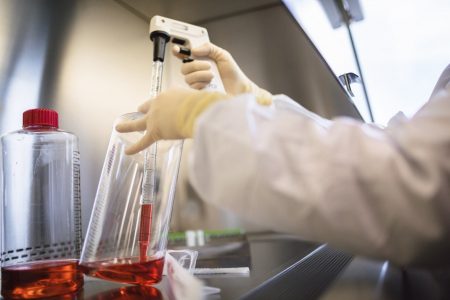January 5, 2018 – A gene therapy that received U.S. Food and Drug Administration approval this week is designed to restore vision to people with biallelic RPE65 mutation-associated retinal dystrophy causing Leber congenital amaurosis (LCA) and retinitis pigmentosa. The developer of the therapy is Spark Therapeutics, a Philadelphia-based company, that in a press release on January 3rd described how Luxturna will be a life-changing treatment for those suffering from genetically caused blindness. It cited two decades of research and development in justifying the price tag of $850,000 US to reverse the RPE65 mutation in those suffering from vision loss. The therapy delivers the corrected RPE65 gene contained within millions of engineered virus particles to the patient’s retina. The treatment dramatically improves vision but likely will not fully restore it.
The CEO of Spark, Jeff Marrazzo, when interviewed by Bloomberg’s news service talks about the price stating, “We believe that this….reflects not only the breakthrough, life-altering value of one-time Luxturna, but it will enable us to continue to invest and build on the revolutionary science that supports not only Luxturna but the rest of our pipeline.”
Not to single out Spark for its pricing model which likely will be unaffordable to very few of the 2,000 Americans suffering from the flawed gene, the sticker shock of such new gene therapies and treatments is problematic. And at $850,000 it’s no wonder that the media has focused on price over performance.
In the Spark press release issued this week, it too focuses on payer programs, rebate arrangements, and innovative contracting models rather than the therapy itself. The goal states the release is “to reduce risk and financial burden for payers and treatment centers.”
Coming Up with a New Pricing Paradigm
As much as gene therapy breakthroughs show promise, the current practice of biomedical and pharmaceutical companies focusing on short-term return on investment and mitigating financial risk remains problematic.
One of the reasons is gene therapies like Luxturna are one-time administered cures. There are no repeat sessions. The patient’s eyesight improves and he or she goes home. Another problem is the nature of the demographics of the targeted diseases that these gene therapies treat. Luxturna is a therapy for up to 2,000 Americans or 0.0006% of the entire U.S. population. When projected to the current world population of 7.6 billion, the entire market universe for Luxturna will equal 4.5 million one-time treatments over the products entire lifetime. Although that number seems fairly large, it represents small potatoes when compared to drugs created to deal with much larger population segments where lower pricing is possible because of scale.
In its announcement, Spark states it is prepared to “share risk with certain health insurers by paying rebates if patient outcomes fail to meet a specified threshold.” In other words, if the treatment doesn’t produce an agreed to outcome based on measurable scores, Spark will credit the treatment payer a percentage of the unit cost.
Since Spark needs a distribution channel to get to those who can benefit from Luxturna, it has created an innovative contracting model that includes hospitals, clinics, and insurance providers that will manage the processing of payments including capping the amount patients have to pay out-of-pocket for the one-time therapy.
Spark’s attempt to create ways to recover their costs and earn a reasonable return-on-investment is a reflection of the sticker shock associated with one-time gene therapies. David Mitchell, President of Patients for Affordable Drugs, an advocacy group concerned with the bankrupting potential of these treatments, states, “drug companies are still going to charge what they think they can get away with.”
So what is going to happen when one-time gene therapy treatments become available for diseases with much larger demographics? In September, Novartis announced an FDA approved $475,000 gene therapy for one form of childhood leukemia, also a rare condition.
But with 504 gene therapy clinical trials currently on the go globally governments and the medical sector including pharmaceutical companies need to create acceptable pricing strategies. Mark Trusheim, Director of MIT’s New Drug Development Paradigms program, has suggested that gene therapies be looked at differently using the analogy of renters who pay a monthly fee for an apartment, versus buyers who make a one-time purchase of a condo. Will the public, the gene therapy developers, and health insurers buy into this new pricing paradigm?









